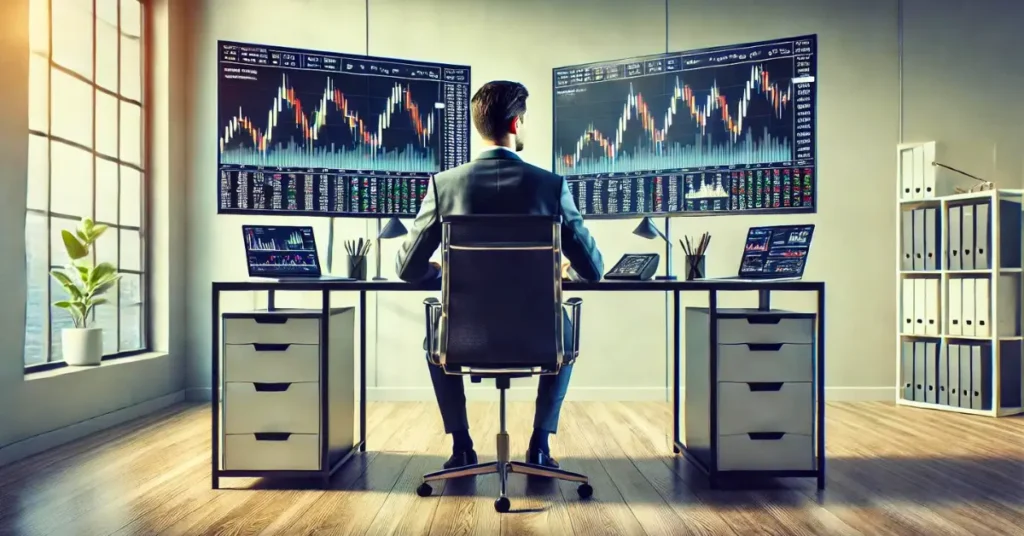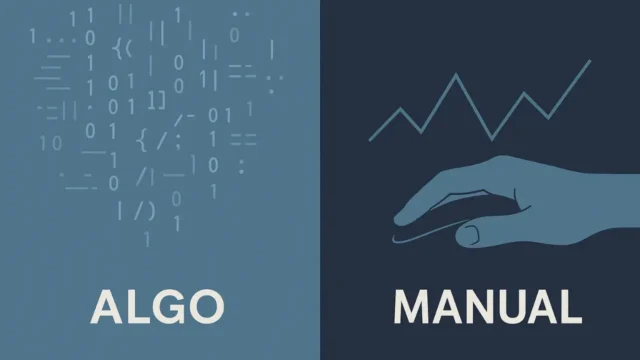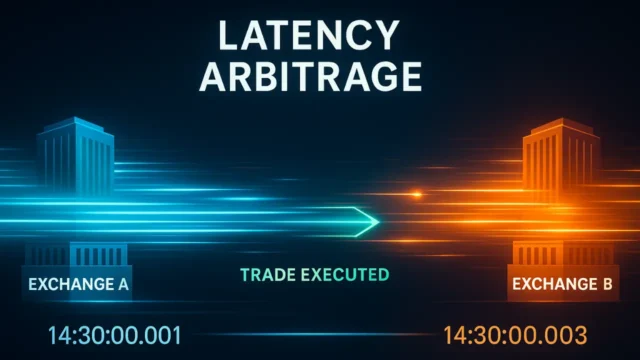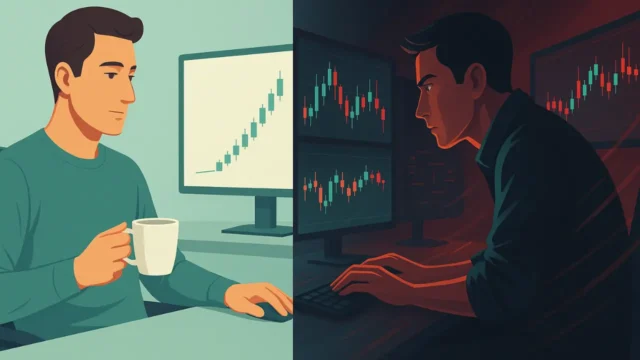Follow Us
What is Trading? Basics, Types, Concepts & How to start it now

Table of Contents
Trading isn’t just a buzzword, it’s become a key player in our financial lives. But what’s it all about?
In the simplest terms, it’s buying and selling. Could be stocks, could be currencies. The goal? To make a profit, of course.
But there’s more to it. Trading shapes economies, influences markets, and yes, it can even impact your personal finance game.
So, why am I chatting with you about this? I’ve spent years learning about the trading world, making my share of wins and learning from the losses.
Section 1: The Basics of Trading
Alright, let’s kick things off with the basics. When we talk about trading in the financial world, it’s all about the art of buying and selling.
But it’s not like your typical trip to the store. Here, we’re dealing with financial products – think stocks, bonds, commodities, and currencies. The playground? The global financial markets.
At its core, trading is a transaction between two parties. One’s selling what they have, hoping to cash in on a higher price.
The other’s buying, betting the price will climb even higher. It’s a dance of supply and demand, where timing and strategy play lead roles.
Trading vs Investing
Now, let’s clear up a common mix-up: trading versus investing.
Trading is the fast-paced cousin in the family. It’s all about making quick moves. Traders buy and sell frequently, eyeing short-term gains.
Investing, on the other hand, is the marathon runner. Investors are in it for the long haul. They pick assets they believe will grow in value over time, think years or even decades.
Here’s the gist:
- Traders chase short-term profits. It’s all about timing and market movements.
- Investors aim for long-term growth, focusing on the bigger picture and fundamental value.
Both approaches have their perks and risks. Trading can offer quick wins but it’s riskier, requiring a good grip on market trends. Investing is slower but generally steadier, banking on the idea that markets tend to rise over time.
The Different Markets
Stock Exchanges: Think of these as the grand bazaars where companies and investors come together. Companies list their shares, and investors buy them, hoping their value goes up.
The New York Stock Exchange, Nasdaq, National Stock Exchange (NSE – India) are some of the major stock exchanges.
Commodities: Here, it’s all about raw materials – oil, gold, wheat. This market is ancient, dating back to when people traded goods in exchange for other goods.
Today, it’s more sophisticated, with trades happening electronically. But the essence remains: supply and demand driving prices.
Forex (Foreign Exchange): Welcome to the world’s biggest financial market. It’s where currencies are traded, 24/7.
Ever exchanged money for a trip abroad? That’s Forex on a micro level. Traders bet on currency values, making profits on changes in exchange rates.
Cryptocurrency: The new kid on the block. This digital currency world is buzzing with names like Bitcoin and Ethereum. No physical coins here, just bits and bytes on a computer.
It’s decentralized, operating outside traditional banking systems, making it a wild, exciting frontier for traders.
Section 2: Types of Trading
Trading types are like the genres of movies. Some prefer the quick action of a thriller, while others enjoy the slow build of a drama.
It boils down to how long you want to hold onto your trades, how much risk you’re willing to take & how you analyze the market.
- Timeframes: Some traders operate in the blink of an eye, while others take a more leisurely pace. Your choice here can range from holding stocks for mere minutes to keeping them for months.
- Risk Tolerance: This is about how much turbulence you can handle. High risk might mean higher rewards, but not everyone enjoys riding the rollercoaster.
- Market Analysis: Here’s where your detective skills come in. Do you prefer analyzing charts and patterns, or do you like digging into a company’s fundamentals? Maybe you’re all about the big-picture economic trends.
Let’s break down the main types of trading into something a bit more digestible. Think of this as your cheat sheet:
| Type | Timeframe | Style | Goal |
| Day Trading | Within a single day | Fast-paced | Profit from short-term price movements |
| Swing Trading | Several days to weeks | Moderate pace | Capitalize on short to medium-term trends |
| Position Trading | Months to years | Slow-paced | Benefit from long-term trends |
| Scalping | Seconds to minutes | Extremely fast-paced | Make quick profits from very small price changes |
Section 3: The Role of Key Institutions
Let’s talk about the big players in the trading game, the institutions that make sure everything runs smoothly.
Stock Exchanges: Picture the New York Stock Exchange or Nasdaq as giant arenas where buyers meet sellers. They’re the heart of the financial market, pumping out opportunities to trade stocks, bonds, and other securities.
Regulatory Bodies: Here come the referees. Organizations like the SEC in the U.S. or the FCA in the UK or the SEBI in India keep the game fair. They set the rules, making sure everyone plays nice, protecting investors from foul play.
Their goal? To maintain trust in the financial markets.
Financial Institutions: Banks, brokers, hedge funds – these are the old players. Banks facilitate the flow of money, brokers connect buyers and sellers, and hedge funds look for opportunities to make profits, often by taking bigger risks.
Together, these institutions ensure that the trading world keeps spinning.
Section 4: The Trading Ecosystem’s Participants
Retail Traders: That’s possibly you and me. Individuals who dive into the market, not as part of their job but to grow their personal wealth.
Institutional Investors: These are the big guns. We’re talking mutual funds, pension funds, and insurance companies managing millions or even billions of dollars.
Governments: Yes, governments play a role too. They can influence the market in a few ways, like adjusting interest rates, changing tax policies, or directly investing in the market.
Section 5: Core Concepts in Trading
Technical Analysis
Technical Analysis is all about studying price movements and trading volumes to forecast future price trends. It’s like reading the market’s mood through its actions.
Why does it matter? Because it helps traders make informed decisions, rather than just going with gut feelings.
Here are some tools of the technical analysis:
- Charts: Line charts, bar charts, candlestick charts… they’re all ways of visualizing how prices have moved over time, helping to spot patterns.
- Indicators: These are like the market’s vital signs. Moving averages, RSI (Relative Strength Index), MACD (Moving Average Convergence Divergence)…etc. these tools help gauge market momentum, trend strength and potential reversals.
Fundamental Analysis
Fundamental Analysis is all about understanding the core factors that influence a company’s future prospects.
It’s digging into financial statements, evaluating industry trends, and even assessing the impact of the economic climate on a company’s growth potential.
The aim? To figure out if a company’s stock is overvalued, undervalued, or just right.
How does it complement technical analysis?
While technical analysis helps you time your entry and exit in the market, fundamental analysis gives you the “why” behind a stock’s potential for growth.
It’s particularly useful for long-term investors who are more interested in a company’s future performance than in short-term market fluctuations.
Liquidity
Liquidity, in the trading world, is like water in daily life – absolutely essential and often taken for granted until it’s scarce.
It’s all about how easily you can buy or sell an asset without causing a significant price movement.
Why is liquidity crucial for traders?
Well, think about trying to sell a car in a hurry. If there’s a bustling market, you can quickly find a buyer at a fair price. But if buyers are scarce, you might have to drop the price significantly to make a sale. The same goes for trading stocks, bonds, or any asset.
High liquidity means lots of buyers and sellers, making it easier to enter and exit positions. This is vital for traders, especially those looking to move fast or those managing large volumes. High liquidity means:
- Better Prices: With more participants, you’re more likely to buy or sell at prices close to the market rate.
- Faster Transactions: You can execute trades quickly, an advantage in fast-moving markets.
- Lower Costs: Less price movement means you’re less likely to encounter slippage (the difference between the expected price of a trade and the price at which the trade is executed).
In essence, liquidity keeps the market gears greased, allowing traders to operate smoothly and with confidence.
Section 6: Mechanics of Trading
At its heart, trading is a dance of supply and demand, played out in markets around the globe every day.
Supply and Demand: This is the engine of the market. When more people want to buy a stock (demand) than sell it (supply), the price goes up.
Conversely, if more want to sell than buy, the price drops. Simple, right? But the trick is predicting these movements.
OTC Trading vs. Exchange Trading: Here’s where the plot thickens. Exchange trading happens on formal exchanges (like the NYSE or Nasdaq) with strict rules and transparency.
OTC (Over-The-Counter) trading? That’s more like the wild west. Trades occur directly between parties, off the formal exchanges. This can involve stocks not listed on the exchanges, and while it offers flexibility, it also comes with less oversight.
Understanding these arenas is key because:
- Market Trends: Spotting patterns in how prices move can help you anticipate future changes. It’s like forecasting the weather by looking at the clouds.
- Liquidity: We’ve talked about this. It’s crucial because it affects how easily you can enter or exit positions. High liquidity equals smoother sailing.
Grasping these basics gives you a solid footing in the trading world. It’s about seeing the big picture, then zooming in on the details that matter.
Section 7: Trading Toolkit
Trading Platforms and Software: These are the dashboards of the trading world. Platforms like E*TRADE, Robinhood, and Zerodha (India) offer a gateway to the markets right from your computer or smartphone.
Financial Instruments: This is what you’re trading. It could be stocks, giving you a slice of ownership in a company. Or bonds, which are like loans to governments or corporations. Don’t forget about commodities like gold and oil, or forex for currency trading.
Algorithms: Welcome to trading in the 21st century. Algorithmic trading uses complex formulas to make high-speed trading decisions.
This can range from strategies that split large orders into smaller, less market-disrupting ones, to high-frequency trading that looks to make profits from tiny price differences at incredible speeds.
The rise of algorithms has changed the game, making markets more efficient but also introducing new challenges and debates about fairness and market stability.
Together, these tools and instruments form the toolkit of the modern trader, understanding and using these tools wisely can be the difference between success and failure.
Section 8: Advanced Trading Strategies
Let us explore some advanced trading strategies.
1. Trend Following: This strategy is all about momentum. You identify which way the market is moving and jump on board, riding the wave until it shows signs of reversing. It sounds simple, but spotting the right moment to enter and exit takes practice.
2. Arbitrage: Ever heard the saying, “buy low, sell high”? Arbitrage takes this to the next level. Traders look for price discrepancies between markets or products, buying in one place and selling in another to pocket the difference. It’s like finding a glitch in the matrix.
3. Swing Trading: This is for those who have patience but not the patience of a saint. Swing traders hold onto their positions for days or weeks, aiming to capture the gains from short-term trends. It’s a balancing act between acting quickly and waiting for the right moment.
4. Scalping: The quickfire challenge of trading strategies. Scalpers make a large number of small trades throughout the day, aiming to snatch tiny profits that add up over time. It’s fast-paced and requires constant attention, but for some, it’s the way to go.
5. Options Trading: This involves buying and selling options contracts, which give you the right, but not the obligation, to buy or sell an underlying asset at a set price. It’s a bit like strategic betting, with various techniques to hedge bets or amplify gains based on how you predict the market will move.
Risk management & the psychological aspects of trading
Risk management and the psychological aspects of trading are two sides of the same coin, both critical for navigating the trading waters successfully.
Risk Management: This is all about knowing your limits and protecting your portfolio.
Key tactics include setting stop-loss orders to limit potential losses, diversifying investments to spread risk, and only risking a small percentage of your portfolio on any single trade.
The goal is to stay in the game for the long haul, not to win big on a single bet.
The Psychological Aspect: Trading isn’t just about numbers and strategies; it’s also a mental game.
Fear and greed are the two biggies that can lead traders astray. Successful traders develop a mental toughness, learning not to get too high with the wins nor too low with the losses.
They stick to their strategy even when their instincts scream at them to do otherwise.
Understanding these aspects of trading is crucial. They remind us that successful trading isn’t just about making smart moves but also about managing ourselves.
It’s a blend of discipline, continuous learning, and emotional control. Master these, and you’re well on your way to becoming a pro trader.
Section 9: How to Start Trading

The chart above outlines the essential steps to kickstart your trading journey. Let’s break them down:
- Education & Understanding: Before diving into trading, it’s crucial to build a strong foundation. Understand the basics of the markets, familiarize yourself with financial instruments, and learn how to read charts and analyze trends. This stage is about absorbing as much knowledge as you can.
- Choosing a Broker: Your broker is your gateway to the markets. Look for one that fits your trading style, offers a user-friendly platform, and has reasonable fees. Don’t forget to check their regulatory status to ensure your investments are protected.
- Setting Up a Trading Plan: A good trading plan defines your goals, risk tolerance, and strategies. It’s your roadmap, guiding you on when to enter or exit trades, how much to invest, and how to manage risks.
- Starting Small: Dip your toes in before diving. Begin with a small amount of capital that you’re comfortable losing. It reduces the pressure and allows you to gain experience without risking your financial well-being.
- Continuous Learning and Adaptation: The market is always changing, and successful traders adapt. Keep learning, stay updated with market trends, and adjust your strategies as needed. Continuous improvement is key to long-term success.
Remember, trading is a journey. Start with solid preparation, choose the right partner, plan carefully, begin cautiously & always keep growing.
Section 10: Staying Ahead with the Latest Trends
Staying ahead in trading means keeping your finger on the pulse of not just the markets but the world at large.
Impact of Global Events on Trading: The butterfly effect is real in the financial markets. A political upheaval here, an economic policy shift there, and before you know it, market waves are rippling across the globe.
For instance, trade wars can impact currency values and stock prices, while geopolitical tensions might spike oil prices.
Smart traders keep an eye on such events, knowing that markets hate uncertainty but love predictability.
The Rise of Sustainable and Ethical Trading: There’s a green revolution happening, and it’s not just about recycling bins. Sustainable and ethical trading is on the rise, driven by investors demanding more than just returns.
They want their money to work for a healthier planet and a fairer society.
This shift is seeing a surge in ESG (Environmental, Social, and Governance) investing, where companies are valued not just on their financial performance but on their impact on the world. It’s trading with a conscience, and it’s gaining ground fast.
Future of Trading: AI, Machine Learning, and Beyond: The future of trading is looking smarter and faster, thanks to AI and machine learning. Imagine algorithms that can predict market movements before they happen, or trading bots that learn from their mistakes.
We’re entering an era where big data isn’t just for tech giants anymore; it’s the new gold for traders. The potential is enormous, from AI-driven analytics providing deeper market insights to machine learning models that evolve trading strategies in real time.
FAQ’s related to Trading
What do you need to start trading?
To start trading, you need a brokerage account, initial capital, basic knowledge of the markets, and a trading plan.
How do traders make money?
Traders make money by buying financial instruments at a lower price and selling them at a higher price or by selling high and buying back lower in short selling. Profits come from price movements in the markets.
Can you be rich as a trader?
Yes, it’s possible to become rich as a trader, but it requires discipline, consistent strategy, risk management, and continuous learning. Success in trading doesn’t happen overnight and involves significant risk.
Can beginners do trading?
Yes, beginners can start trading, but it’s essential to educate themselves about the markets, practice with a demo account, and start small.
How does one choose what to trade?
Choosing what to trade involves assessing your financial goals, risk tolerance, market knowledge, and the time you can dedicate to trading. Focus on markets or assets you understand well and match your investment strategy.
What are the risks associated with trading?
Risks in trading include market risk, liquidity risk, leverage risk, and volatility. Understanding these risks and employing proper risk management strategies is crucial to mitigate potential losses.
Can trading be a full-time profession?
Yes, trading can be a full-time profession for individuals who are committed, have a solid understanding of the markets, and are proficient in risk management. It requires discipline, continuous learning, and adaptability to market changes.
How do regulatory bodies affect traders?
Regulatory bodies ensure fair and transparent market conditions, protect against fraud, and enforce trading rules. They impact traders by setting standards for the operation of brokers, markets, and the overall trading environment, enhancing trader confidence.
What’s the difference between day trading and swing trading?
Day trading involves buying and selling financial instruments within the same day, capitalizing on short-term market movements.
Swing trading, on the other hand, takes advantage of price momentum over several days to weeks, allowing for potentially greater gains from broader market movements.
Disclaimer:
This content is for informational purposes only and should not be considered financial advice.
Read full Disclaimer.




